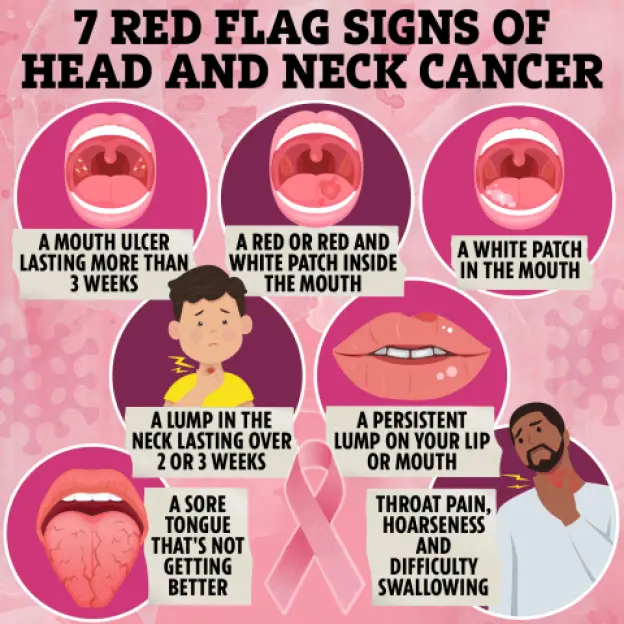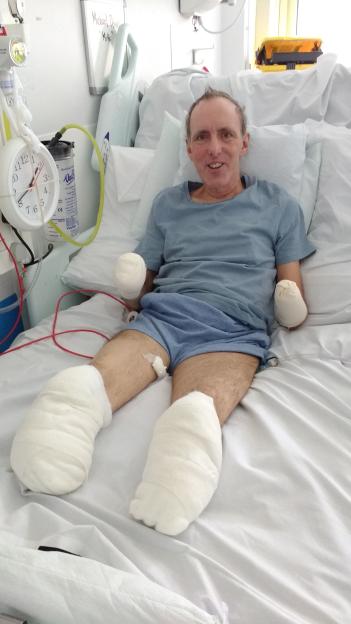WE’VE all been there, when a scratchy tickle suddenly blossoms into a sore throat that makes swallowing feel like sandpaper.
And while most sore throats are harmless and go away on their own, a leading specialist warns not to ignore one that lingers.
 If you’ve had a sore throat for longer than three weeks go and see your GP
If you’ve had a sore throat for longer than three weeks go and see your GP
Doctor Jiri Kubes, an oncologist from the Proton Therapy Center in Prague, said a persistent itch could be an early sign of head or neck cancer.
“People assume it’s just an infection or acid reflux, especially if they’re otherwise healthy,” the expert said.
“But when a sore throat won’t go away and it doesn’t respond to normal treatments, it’s time to investigate.”
Earlier this month, The Sun reported that Rock star David Roach has been diagnosed with a “very aggressive” form of cancer after symptoms of a “fever and a cough”.
The band has launched a GoFundMe while also confirming David is “battling aggressive squamous cell carcinoma affecting his head, neck, and throat ”.
This would suggest that David has head and neck cancer , of which squamous cell carcinoma is the most common type.
Val Kilmer, best known for movies such as 1986’s Top Gun and 1995’s Batman Forever, died of pneumonia this April.
The actor’s death follows years of rumoured health problems, one of which he opened up about in a 2017 interview.
Speaking to the Hollywood Reporter, Kilmer revealed he had a two-year fight with throat cancer after being diagnosed in 2014.
Head and neck cancers can occur in more than 30 parts of head and neck, including the mouth , throat, nose, sinuses, ears and salivary glands.
But collectively, head and neck cancer is the eighth most common type of the disease in the UK.
There are around 13,000 new cases every year – or 35 every day – and numbers are increasing 30 per cent each decade, experts warn.
It kills more than 4,000 annually.
Symptoms of head and neck cancer, like Dr Jiri said, can be subtle, or resemble other less serious conditions, meaning it is often diagnosed at a late stage.
But the earlier it’s caught, the better the chance of successful treatment and ultimately, survival.
Symptoms can include:
- Persistent sore throat
- Ear pain without infection
- Hoarseness or voice changes
- Trouble swallowing
- Lump in the neck
- Unexplained weight loss
“If you’ve had a sore throat for more than three weeks, especially if it’s on one side, or you have ear pain without an infection, speak to your GP,” the expert said.
He added that while smokers and regular drinkers are more at risk, even people without obvious risk factors are being diagnosed.
“We’re seeing rising cases in younger people with no obvious risk factors, particularly linked to HPV infections,” he said.
 Singer David Roach has been diagnosed with cancer, believed to have started in his throat
Singer David Roach has been diagnosed with cancer, believed to have started in his throat
 Val Kilmer had a two-year fight with throat cancer after being diagnosed in 2014
Val Kilmer had a two-year fight with throat cancer after being diagnosed in 2014

Recognising these symptoms is vital.
But prevention is also key, and making several lifestyle changes can decrease your chance of developing cancer , the Oracle Head & Neck Cancer UK (OHNCUK) say on its website.
This includes:
- Quitting tobacco use ( smoking cigarettes, cigars and pipes, chewing tobacco, e-cigarettes, and using snuff)
- Limiting alcohol intake
- Monitoring and taking care of your oral health
- Getting the HPV vaccine
According to Cancer Research UK , up to 64 per cent of head and neck cancer cases are linked to exposure to tobacco smoke.
Between 22 and 38 per cent are linked to alcohol consumption, and as many as 80 per cent are connected to HPV infection.
Microplastics could raise cancer risk
Environmental pollution from the air we breathe might also play a role, Dr Jiri warned.
“Microplastics and airborne pollutants can irritate delicate tissues in the throat and airways,” he said.
“We don’t yet know the full impact. But chronic exposure could increase inflammation and potentially raise cancer risk over time.”
He said most sore throats are harmless. But warned people to trust their gut if something feels off.
“Most sore throats are harmless. But if it drags on, get it checked,” he said.
“Cancers in this area are very treatable when caught early. Especially with targeted therapies like proton beam treatment.”
Proton beam therapy is a precise type of radiation that targets cancer cells while causing less damage to surrounding healthy tissue.
It’s often used for hard-to-reach tumours and causes fewer side effects than standard radiotherapy , a common cancer treatment.
Head and neck cancer in numbers
- There are around 13,000 new cases every year – or 35 every day
- It kills more than 4,000 annually
- It is the eighth most common cancer in the UK
- It is the fourth most common cancer in men in the UK
- It is the fifth most common cancer in women in the UK
- Incidence rates in the UK are highest in people aged 65 to 69
- Between 19 and 59 per cent of patients survive head and neck cancer for 10 years or more
- Between 46 and 88 per cent of cases are preventable
- Since the early 1990s, incidence rates have increased by 35 per cent in the UK
- There could be around 16,300 new cases every year in the UK by 2038 to 2040, projections suggest
- Nearly one in 96 UK women and one in 43 UK men will be diagnosed with head and neck cancer in their lifetime
Source: Oracle Head & Neck Cancer UK and Cancer Research UK







